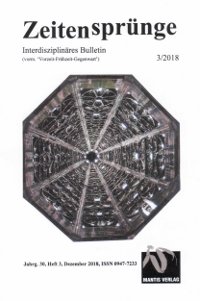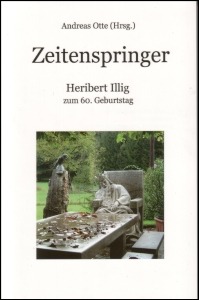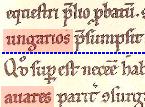Vor kurzem wurde hier auf die Neuausgabe von The Prolegomena of Jean Hardouin übersetzt durch Edwin Johnson hingewiesen. Das Vorwort zu dieser Ausgabe (von Edward A. Petherick, einem Freund von Edwin Johnson) enthält einen überaus bemerkenswerten Abschnitt, der im Folgenden präsentiert wird:
…
We may dismiss the charge of forgery. There is a simpler and, I think, a satisfactory explanation — error in our chronology. The tale of a chronological system invented by Dionysius Exiguus, six hundred years after the beginning of the Era and eight hundred years before the system came into use, is merely a tale. Our chronological chart was not constructed before it was required; and some “Little Denis” made it towards the end of the fifteenth century. Elsewhere (Introduction to ]ohnson’s Rise of English Culture) I have drawn attention to a few anomalies of the system; so I will only note here that, assuming for the moment the Era of Christ to be correct, the period between the Age of Alexander the Great and our own is roughly 2300 years. We have here, so to speak, a tape measure of twenty-three inches, too long by seven or eight inches; for between the Age of Alexander and our own we have no authentic historical material in Europe for more than fourteen or fifteen centuries. There is a hiatus of more than seven hundred years. When we apply our twenty-three inch tape measure to the histories of Egypt, Persia, and India — wherein the conquests of Alexander also mark a well-known period — we find the same result. It is too long and there are parallel and corresponding gulfs of darkness more than seven hundred years in length, which cannot be bridged by a scrap of authentic historical material. Similar fabulous periods occur in British and Scandinavian history (so-called); Welsh literature goes back only to the ”twelfth” century.Looking backward, we find no authentic Papal records older than the ”twelfth” century. That is also the time of the commencement of cathedral-building in Italy, France, and England. On the Continent ecclesiastical buildings succeed the Roman temples without a break. In Rome, the Eternal City, the historians Gregorovius, Freeman and Bryce see no monuments to mark an intermediate Age between the days of the Caesars and the later days of her Pontiffs. Mr. Bryce asks “Where is the Rome of the Middle Ages?” a question to which he himself replies, ”There is no answer.”
There appears to the present writer to be no other satisfactory explanation for the errors of antedating, and charges of forgery, than this of chronological blundering. There was invention of heresies and heresiarchs and Councils and Ecclesiastical history — literary work by ”Augustines,” “Lactantii,” ”Tertullians,” “Eusebii,” “Isidorians,” “Procopii”— besides literature of controversy and debate in great abundance. The dating must be attributed to the chronologers who, not much more than four hundred years ago, estimated and approximately fixed the date of “Creation” as only so many generations, or four thousand years, before Christ, and gave us much too liberal an allowance of fifteen hundred years after Christ.
To work out this suggestion: If we assume that “Little Denis” put the clock on 750, or say 753 years, and we deduct that time from our Christian Chronology, we are only in A.D. 1156, which (still upon assumption) corresponds with the year of Rome (A.U.C.) 1909. Adopting this reckoning, the dates of the last 900 or 1000 years would remain as at present, though not as A.D., but as A.U.C,
EDWARD A. PETHERICK
Melbourne, 30th April, A.U.C, 1909
Eine für mich noch offene Frage ist: Wessen Gedanken werden hier präsentiert? Sind es Johnsons oder Pethericks? Es scheint mir Petherick zu sein, der Johnsons Werk, das er zum Teil posthum herausgegeben hat, interpretiert und eine erstaunliche alternative Lösung anbietet, die Johnson in dieser Klarheit wohl nicht gesehen hat.
Über Petherick ist leider nicht viel bekannt. Er war Buchhändler und -sammler in Melbourne. Es sieht ganz so aus, als ob Petherick außer in Vorworten zu Johnsons Büchern nichts zu diesem Thema geschrieben hat. Diese Spur wird weiter zu verfolgen sein. Insbesondere das Vorwort zu The Rise of English Culture ist hierbei von großem Interesse.






Petherick ist also für das Jahr 0/1 unserer Zeitrechnung bei 753 v.Chr. angelangt. Ist man nun konsequent, sollte man auch gleich die anderen dunklen Jahrhunderte der Geschichte mit beseitigen. Das wären dann zwischen ca. 1200 und 750 v.Chr. noch einmal ca. 450 Jahre. Da ist man dann zuzuglich weiterer ca. 100 Jahre beim Jahr 1312/13 v.Chr.. Analysen von Heinsohn und Illig ergeben für den entsprechenden Zeitraum vor Alexander vergleichbare Kürzungen. Hierzu mehr unter:
http://www.fantomzeit.de/?page_id=239/sonstiges-1/eine-umdeutung-der-person-jesus-christus-1/#p2056
Ein Kommentar von Volker Dübbers zu diesem Beitrag ist hier nachzulesen.